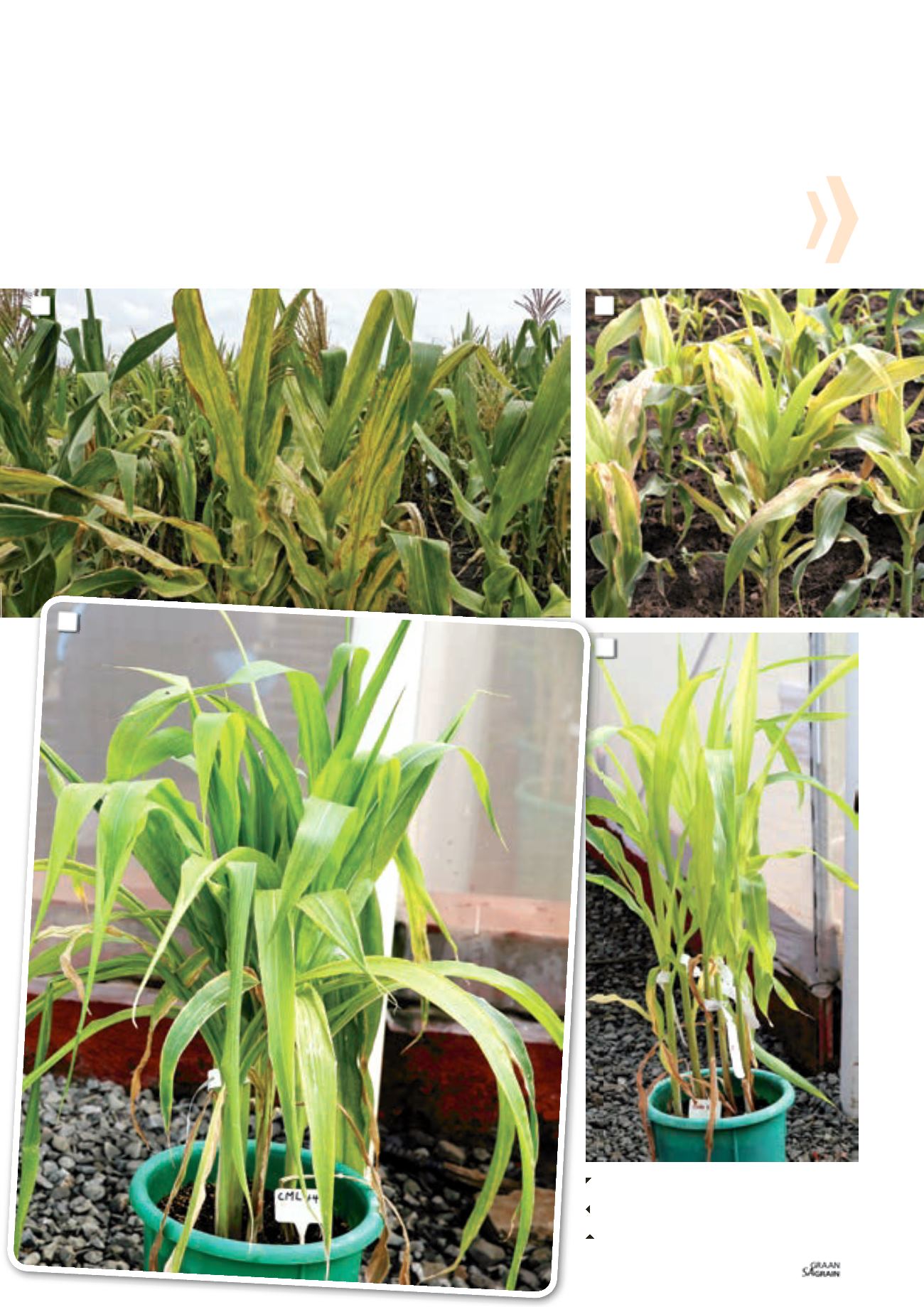

79
July 2016
sion being 17/42 000 plants (0,04%) and maize dwarf mosaic virus
being 21/72 897 plants (0,03%).
Even though these figures appear very low and may be regarded
by some as negligible we need to put it into perspective. In a maize
field planted at a density of 40 000 plants/ha you potentially have
17 maize chlorotic mottle virus inoculum focal points and twelve
maize dwarf mosaic virus inoculum focal points. Should there be
vectors present these low numbers of focal points could result in the
outbreak of an epidemic that we may never stop.
More recent studies, however, have shown that seed from infect-
ed maize plants may have a seed transmission rate of up to 100%,
hence the urgent implementation of phytosanitary regulations by
the Department of Agriculture, Forestry and Fisheries (DAFF) to re-
duce the risk of importing contaminated seed into South Africa.
Currently these phytosanitary regulations are critical to reduce the
risk of this disease (primarily maize chlorotic mottle virus) from en-
tering South Africa. The quick, long distance spread of the disease
from Kenya to other east African countries has been attributed to
the movement of contaminated seed from maize lethal necrosis in-
fected areas.
Maize chlorotic mottle virus has also been reported to be transmit-
ted through soil and infected leaf debris since the virus is able to
survive in plant residues. The planting of continuous maize in a field
greatly increases the incidences of both viruses and vectors.
1a and 1b: Maize lethal necrosis symptoms in an
infected field.
2: Maize chlorotic mottle virus symptoms on
maize.
3: Sugarcane mosaic virus symptoms on maize.
1a
1b
3
2

















